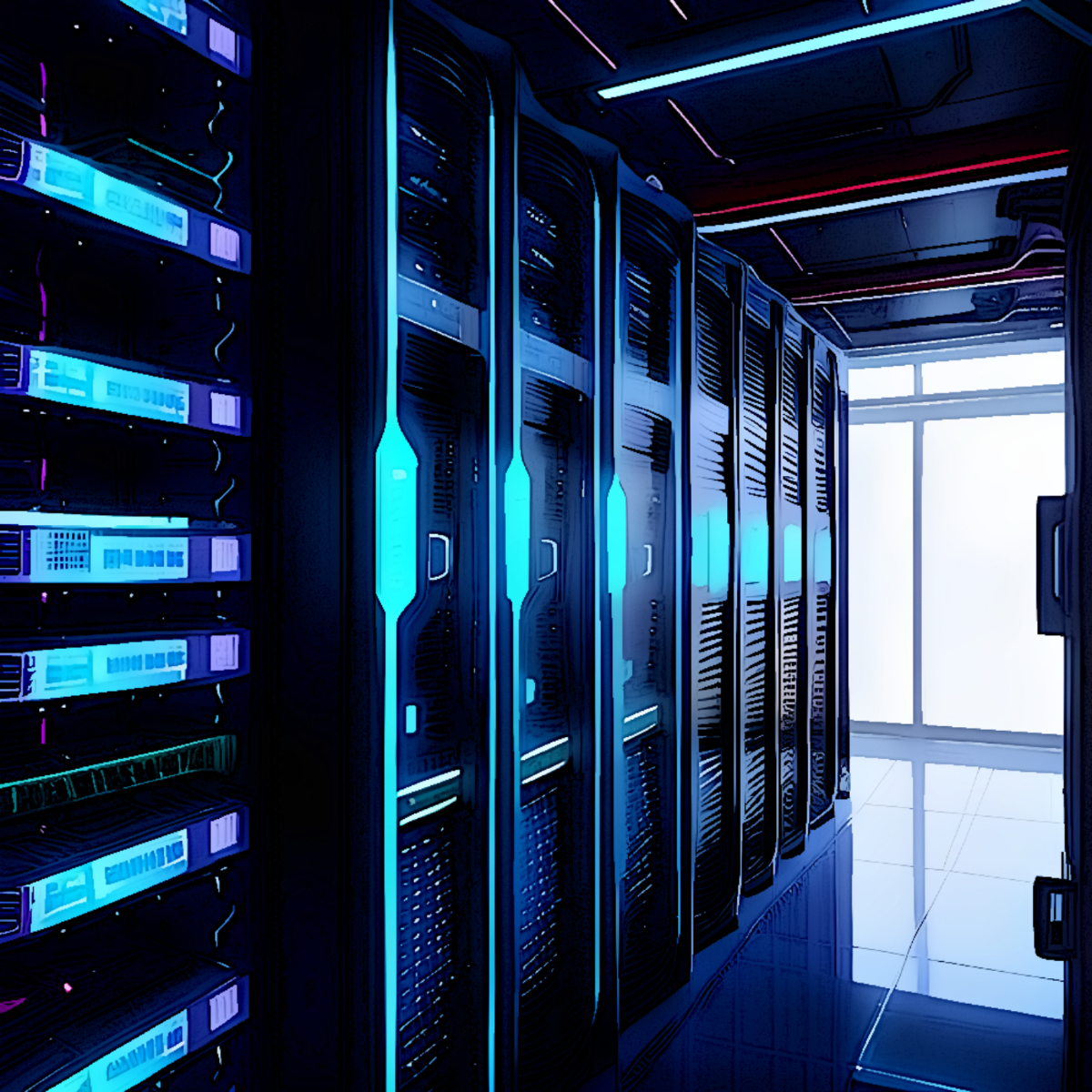With the increasing number of applications and services utilized in today’s data centers, maximizing their efficiency has become a priority. Data center rack density is an essential concept that can help drive improved performance while cutting back on costs. Unlocking the power of data center rack density requires understanding current best practices and strategies to ensure maximum benefit to both businesses and IT departments. In this article, we’ll explore the various methods for deploying high-density racks as well as how these approaches can translate into increased performance and cost savings.
Data center rack density and why it matters to businesses
In today’s fast-paced digital age, businesses rely heavily on data centers to store and process their critical applications and services. As the demand for computing power continues to increase, the need to maximize efficiency and minimize costs has become more crucial than ever. This is where data center rack density comes into play.
Data center rack density is a measure of how many servers or other equipment can be accommodated in a single rack space within a data center. By deploying high-density racks, businesses can save valuable floor space while also reducing energy consumption and cooling costs.
Not only does achieving optimal rack density lead to cost savings, but it also improves performance by increasing compute capacity in smaller spaces. Furthermore, high-density racks allow IT departments to achieve greater agility with faster deployments without sacrificing scalability or reliability benchmarks – making it an essential component for any organization looking to remain competitive in today’s crowded marketplace.
What is rack density and how is it measured?
Rack density refers to the amount of computing power or loads a data center can accommodate within a single rack. In other words, it is the total number of servers, switches, and storage units that can be installed in a cabinet without exceeding its cooling capacity. The measurement of rack density could be expressed in the form of kW per rack or compute power per square foot.
There are different ways to calculate rack density depending on the type of equipment installed and their power consumption. Basic measurements include wattage draw, heat dissipation rate, and airflow requirements. Other factors such as server utilization rates and workload demands may also affect how much hardware should be placed in each cabinet.
To measure rack density accurately, various tools like thermal sensors, power meters, or energy management software can be used to monitor temperature fluctuations and energy usage over time. By analyzing these metrics consistently, IT operators can predict potential issues before they occur and optimize cooling systems for maximum efficiency. Ultimately, maximizing rack density helps increase computing performance while reducing operational expenses for businesses relying on data centers for critical application hosting needs.
Importance of selecting the right rack density for your business needs
Selecting the right rack density for your business needs can greatly impact the efficiency and cost-effectiveness of your data center. Rack density refers to how much IT equipment is housed within a single server rack, ranging from low-density (less than 5 kW) to ultra-high-density (30 kW or more). A higher density generally means increased processing power but also requires greater cooling and power requirements.
Choosing a higher rack density may seem like an attractive option for businesses with heavy workloads, however, it’s important to consider if your current infrastructure is capable of supporting it. Proper planning and implementation are vital to avoid unplanned downtime due to overloading servers or insufficient cooling capacity. On the other hand, choosing a lower density may result in underutilized resources which can lead to unnecessary expenses.
In summary, selecting the optimal rack density for your data center involves careful consideration of both performance and cost factors. By assessing current infrastructure capabilities along with anticipated growth projections, businesses can make informed decisions toward improved efficiency and productivity while minimizing expenses.
Factors that impact rack density, including power and cooling requirements
Several factors impact rack density in data centers, including power and cooling requirements. High-density racks generate more heat due to the greater concentration of IT equipment, which can lead to overheating if not adequately cooled. This makes it critical for data center managers to ensure that their infrastructure can deliver enough power and cooling capacity to support the high-density environment where racks require up to 10kW or even 50 kW depending on the size and type of servers.
To guarantee sufficient cooling in a high-density data center environment, managers must deploy appropriate airflow management strategies as well as develop efficient air conditioning systems capable of removing heat from server rooms with maximum efficiency while minimizing energy consumption costs. Other important considerations include rack location relative to air ducts and water sources, load distribution across all its servers properly, electrical supply redundancy, or backup generators for situations when primary power sources are unavailable.
Consequently, having a balanced approach involving adequate planning and infrastructure tailoring can significantly improve performance while ensuring cost savings related to electricity bills rather than just being another “box”—a storage device—within a sea of storage devices constantly consuming resources without providing any kind benefit beyond storing bits indefinitely before being eventually decommissioned serving no further purpose.
Google best practices for optimizing data center rack density
Google has been a leader in the data center industry and is known for its innovative approaches to optimizing rack density. One best practice that Google recommends is using hot/cold aisle containment to separate cold air from hot exhaust air, thereby reducing the mixing of these air streams and increasing cooling efficiency. Another approach is deploying servers with higher CPU capacity, which can result in fewer server devices required per workload while also improving performance.
To maximize rack density, Google also suggests using smaller form factors such as blade servers or microservers versus traditional 1U or 2U rack mount servers. This allows more computing power to be packed into a single physical space within the data center resulting in greater infrastructure utilization and cost savings. Additionally, upgrading power distribution units (PDUs) to those with better power management capabilities can enable more efficient use of available electricity resources.
By following these best practices and adopting innovative strategies like artificial intelligence-driven thermal management systems and liquid cooling technologies, businesses can successfully unlock the untapped potential of their data centers through improved rack density optimization measures ultimately leading to enhanced overall performance and reduced costs.
How to calculate rack density based on server and infrastructure requirements
Calculating rack density is a crucial step in ensuring the efficiency of your data center. The first thing to consider when calculating rack density is the number of servers that can be installed in a particular space. This involves taking into account both vertical and horizontal spacing requirements, as well as power consumption and cooling needs.
Once you determine how many servers can fit in one rack, it’s essential to factor in infrastructure requirements such as power distribution units (PDUs), cabling, and air conditioning units. These need adequate space within the same rack without affecting server performance negatively. PDUs should have a high voltage rating to prevent tripping off while switching workloads while connectivity cables must get routed neatly keeping bad connection cases at bay.
Overall, successful data center rack density planning consists of balancing factors like operational costs, technology budgets, and capacity management techniques alongside physical things like server dimensions and cabinets with results eventually cutting back spending too much money on acquiring new hardware which will end up filling up valuable spaces unnecessarily.
Benefits of higher rack density, including cost savings and energy efficiency
Higher rack density in data centers can bring about numerous benefits, ranging from reduced costs to improved energy efficiency. By increasing the number of servers or equipment that can fit into a single rack, businesses, and IT departments can significantly reduce their footprint and optimize space utilization. This saves on real estate costs as well as operational expenses such as power and cooling solutions.
Moreover, higher rack density increases energy efficiency by allowing for better airflow management within the data center. With proper heat dissipation techniques in place, organizations can minimize the amount of energy used for cooling while maintaining optimal operating temperatures for their equipment. As more companies adopt cloud-based technologies and require more processing power, deploying high-density racks becomes an essential aspect of running a cost-effective and eco-friendly data center.
Overall, unlocking the potential of higher rack density requires implementing best practices such as efficient cabling management, deployment strategies that balance performance with redundancy, and smart environmental monitoring systems. By doing so, organizations stand to reap significant savings on both financial and environmental fronts while enjoying improved performance capabilities for their critical applications.
Challenges associated with high rack density, such as increased heat and potential downtime
While high rack density can benefit data centers by optimizing space and energy consumption, it also poses several challenges. One of the biggest concerns is increased heat generation due to the concentration of servers in a small area. The more densely packed racks are, the harder it becomes to dissipate heat efficiently, which can lead to equipment failure or reduced lifespan. Cooling systems may have to work harder and use more power to maintain a stable temperature, increasing operational costs and environmental impact.
Another challenge associated with high-density racks is potential downtime caused by equipment failures or maintenance issues. With many servers stacked closely together in a single rack, any malfunctioning component can cause a domino effect that affects multiple applications or services simultaneously. This increases the risk of system-wide crashes and longer outage times since technicians may need more time and effort to isolate and resolve problems within tight spaces. Preventive measures such as regular maintenance checks or redundancy backups are crucial for minimizing these risks but also require additional resources and planning efforts from IT teams.
Overall, while adopting high-density rack solutions offers many benefits for businesses aiming to maximize their data center efficiency, they must be aware of these challenges beforehand and implement appropriate mitigation plans accordingly.
Strategies for managing heat and maintaining optimal rack density in the data center
Maintaining optimal rack density is crucial for efficient heat management in a data center. One of the strategies for achieving this is through hot and cold aisle containment. This technique involves separating the hot exhaust air from IT equipment using a barrier, which directs it toward air handlers that effectively remove it outside the facility. On the other hand, cool air goes directly to where IT equipment needs it most. By implementing this strategy, organizations can more effectively manage airflow inside their data centers while reducing energy use.
Another effective strategy for managing heat and maintaining optimal rack density is utilizing liquid cooling solutions. Liquid cooling systems transfer heat away from servers at a faster rate than traditional air-based methods without increasing power usage significantly. As such, they support higher-density server deployments by providing adequate cooling capacities and improving hardware reliability.
In conclusion, organizations must implement specific approaches to maximize their data center’s capabilities fully while minimizing their operational expenses without compromising performance levels obtaining high-density racks deployed with proper thermal protections such as cold/hot-aisle containment or using liquid cooling technology are two best practices that guarantee cost-savings enhancing efficacy.
Best practices for selecting and deploying the most appropriate rack density for your IT infrastructure
When it comes to selecting and deploying the most appropriate rack density for your IT infrastructure, several best practices should be considered. First, assess your current and future needs carefully. Determine what applications you’ll need to support in the coming years and plan accordingly. Also, consider your power and cooling capabilities as well as any space constraints that may limit your options.
Secondly, choose a suitable vendor or supplier who specializes in high-density computing solutions. Look for a company with experience in designing and deploying data center racks tailored to meet specific requirements such as power density, thermal management, security features, etc.
Finally, test thoroughly before deployment. Once you’ve selected the right solution for your business needs and objectives, make sure you carry out comprehensive performance tests on new equipment before deployment. This will help minimize potential downtime due to unanticipated issues during installation or after going live.
In conclusion, the successful application of these best practices can enable businesses not only to maximize efficiency but achieve cost savings while remaining competitive through optimizing IT infrastructure performance ultimately driving growth.
Impact of rack density on other aspects of your IT environment such as networking and storage
Rack density can have a significant impact on other aspects of the IT environment such as networking and storage. High-density racks require more power and cooling, which may lead to increased networking costs due to higher energy consumption. Additionally, high-density racks may also lead to changes in network architecture since they often require specialized equipment for effective management. Moreover, increased rack density means that there are more servers handling workloads in a smaller physical space, which puts pressure on storage capacity.
Storage is another critical aspect of IT environments that are affected by rack density. As rack densities increase, it becomes important for businesses to invest in high-capacity storage devices capable of handling large volumes of data generated from applications running on these systems effectively. In addition, faster access speeds may be required to keep up with the demands placed on them by densely populated racks’ fast-paced processing needs. It’s essential for businesses deploying high-density racks to ensure adequate storage capacity is available so that system performance does not suffer because lower storage capacity or slow access times can harm application performance if left unaddressed.
In conclusion, maximizing efficiency while cutting back costs has become increasingly essential in today’s data center landscape where applications/services demand continues growing by leaps and bounds daily. Rack density plays an integral role here because it can both positively/negatively impact other areas like networking/storage depending upon deployment methods companies utilize when installing their infrastructure solutions; hence it’s worth exploring various best practices/strategies available that will unlock maximum benefits out-of-data-center-rack densities!
How to determine if your current rack density is meeting your needs, and when to consider upgrading
Determining whether your current rack density is meeting your needs is crucial to maintaining efficient operations in the data center. One of the first things to consider when evaluating rack density is physical space constraints. Are you making optimal use of available space, or are racks overpacked and inaccessible? Additionally, monitoring power consumption trends can provide insight into how well racks are performing under load. If you notice consistent overheating or tripped breakers due to inadequate ventilation, it may be time for an upgrade.
Another factor in determining whether a rack density upgrade may be necessary revolves around IT workload demands. As organizations grow and technology usage increases, so does computing demand. This often results in an expansion of hardware resources that must be housed within the data center walls. If additional compute infrastructure cannot be efficiently accommodated within existing server racks, upgrading to higher-density units might become a requirement.
Overall, maximizing performance while minimizing cost through intelligent deployment of high-density racks requires careful planning and implementation practices specifically tailored to individual data centers’ unique infrastructure requirements. Regular evaluations should assess both physical constraints (such as power capacity and cooling efficiency) as well as strategic factors (like scalability requirements) before committing resources towards any significant updates or investments within this realm of operation management strategy.
Future trends in data center rack density and how they will impact businesses
As businesses continue to rely more heavily on technology and data, the demand for efficient data centers is skyrocketing. Increasing rack density is one of the most promising solutions to addressing this need. Higher-density racks provide greater computing power in smaller spaces, allowing companies to manage a more considerable amount of data with less hardware. Moreover, deploying high-density racks can also result in cost savings due to reduced maintenance requirements and lower energy consumption.
However, as organizations begin implementing higher-density racks into their infrastructure, they must be mindful of potential challenges. These include increased heat output from densely packed equipment which can potentially cause overheating issues if not properly addressed. Power management also becomes a concern as higher densities require more electrical input which must be closely monitored for efficiency and security purposes. Despite these hurdles though, it is certain that future trends will see even greater emphasis placed on improving data center rack density to meet increasing demands while remaining operationally efficient and cost-effective.
Importance of optimizing data center rack density for improved performance and cost savings
In conclusion, optimizing data center rack density is crucial for improved performance and cost savings in today’s digital age. The rising demand for applications and services has increased the number of servers housed within data centers, further emphasizing the importance of maximizing their efficiency. When utilized effectively, high-density racks can help achieve this goal by reducing floor space requirements while increasing computing power.
Furthermore, adopting best practices and strategies for deploying high-density racks plays a significant role in achieving maximum benefit to businesses and IT departments alike. These include proper planning to ensure adequate cooling capacity, choosing densities that suit business needs without compromising on power consumption, and ensuring scalability to accommodate future growth.
In summary, unlocking the power of data center rack density is essential in driving improved performance while cutting back on costs. Boosting energy efficiency through high-density deployments allows organizations to reduce their carbon footprint while simultaneously saving money on electricity bills – thus improving both environmental responsibilities as well as bottom-line profits.
Additional resources for learning more about data center rack density and best practices
In addition to the article, there are additional resources available for those interested in learning more about data center rack density and best practices. For example, online forums and discussions can provide valuable insights from professionals who have hands-on experience with the deployment and management of high-density racks. There are also webinars hosted by industry experts that delve into topics such as cooling solutions, power distribution, and cabling infrastructure necessary for optimal performance.
Moreover, organizations can opt for specialized training courses offered by vendors or third-party providers geared towards educating IT personnel on proven best practices related to data center design. These courses often cover advanced topics including computational fluid dynamics (CFD), airflow modeling techniques, and other tools essential for optimizing equipment placement within a given space while ensuring minimal downtime.
Overall, continuous education is crucial when it comes to staying up-to-date on all aspects of data center operations. From monitoring energy usage patterns to implementing smart software tools that allow real-time tracking of assets – access to accurate information is the key factor in unlocking maximum benefit from your data center’s resources whilst lowering overall costs associated with running them effectively.






